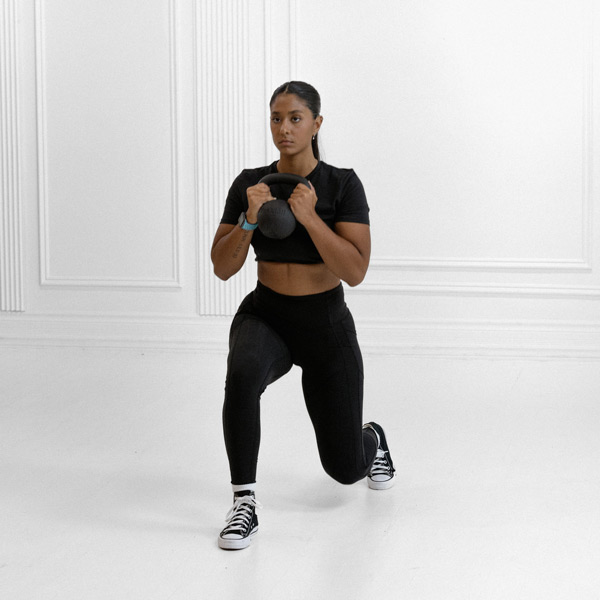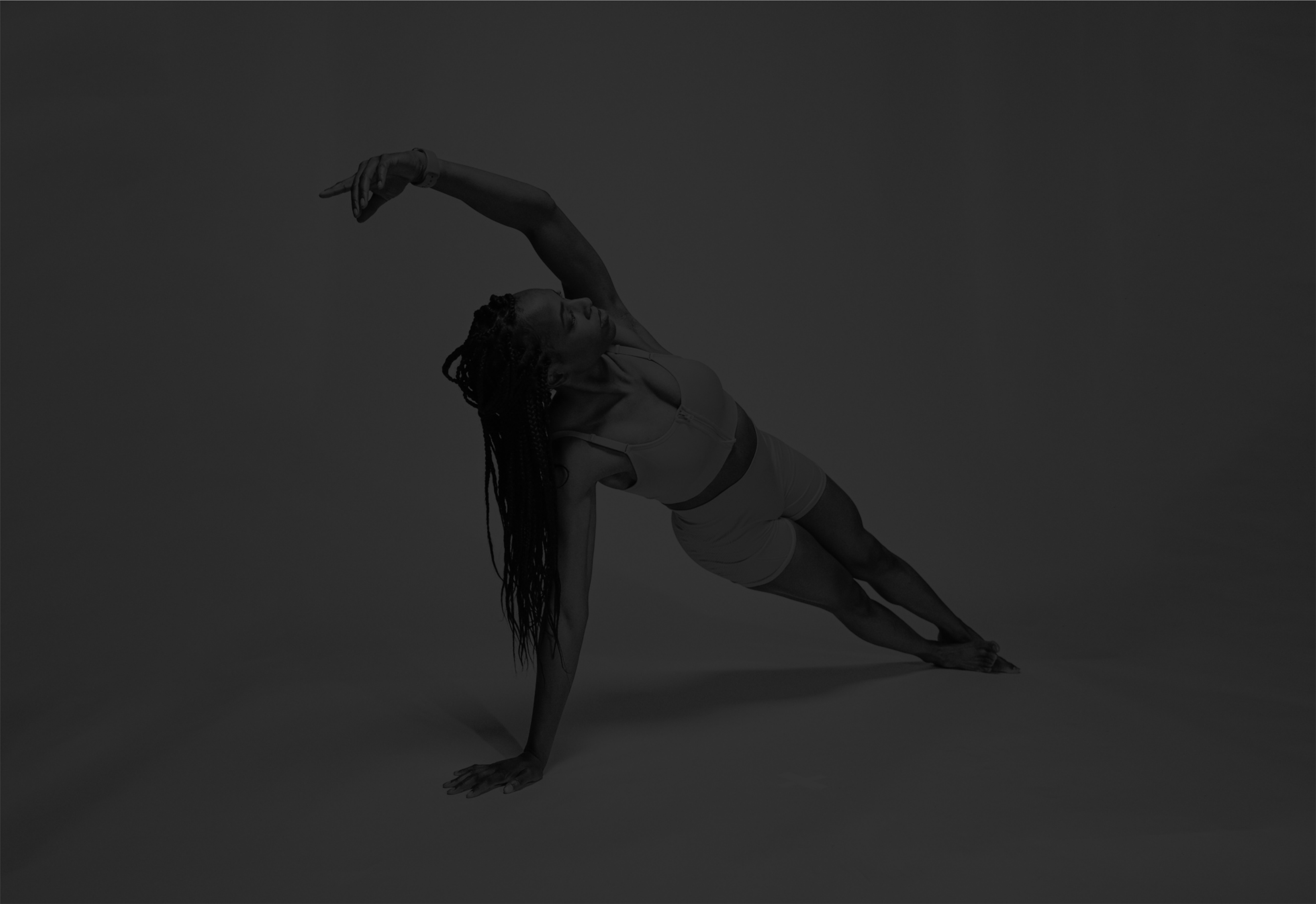Kettlebell Lunge with Twist
A dynamic lunge variation holding a kettlebell in goblet position, combining forward stepping with torso rotation to target quads, glutes, hamstrings, and obliques for improved stability, coordination, and core strength in multi-directional movements.
About Exercise
Equipment
Kettlebell
Difficulty
4/5 • Intermediate
Primary Muscle Groups
Quads, Glutes, Obliques
Secondary Muscles
Lower Back, Adductors, Calves, Hip Flexors
Popularity Score
6
Goals
Training Style
Setup Requirements
Requires Rack
No
Requires Bench
No
Requires Spotter
No
Space Needed
Medium
Noise Level
Low
Muscle Breakdown
View Muscle MapQuads
9/10Rectus Femoris, Vastus Lateralis, Vastus Medialis
Glutes
8/10Glute Max
Obliques
8/10External Obliques, Internal Obliques
Hamstrings
7/10Biceps Femoris, Semitendinosus
Abs
6/10Rectus Abdominis
Lower Back
5/10Erector Spinae
Adductors
4/10Calves
3/10Soleus
Hip Flexors
3/10Iliopsoas
Programming
Typical Rep Range
8-15 reps
Rest Between Sets
60-90 seconds
How to Perform
Stand tall with feet hip-width apart, holding a kettlebell close to your chest with both hands, elbows tucked in, core braced.
- Step forward with right foot into lunge until both knees bend 90 degrees, front thigh parallel to floor.
- Rotate torso and kettlebell right over front leg, keeping hips square and spine tall.
- Return torso to center facing forward.
- Drive through front heel to return to stand.
- Repeat on left side, alternating legs.
Coaching Tips
Form Cues
- Keep chest up.
- Core tight throughout.
- Knees track over toes.
- Rotate from thoracic spine.
- Hips level in lunge.
Breathing
Inhale as you lunge forward, exhale as you rotate and push back to start.
Tempo
3-1-2
Range of Motion
Lower until front thigh is parallel to floor, back knee hovers above ground; rotate torso 45 degrees over front leg without twisting hips.
Safety
Safety Notes
- Avoid if acute knee or lower back pain present.
- Master bodyweight lunges first.
- Use light weight to practice form.
- Ensure clear space to avoid obstacles.
Spotting
No spotter needed; use self-supported technique or wall for balance if beginner.
Common Mistakes
- Knee caving inward.
- Leaning forward during rotation.
- Using momentum instead of control.
- Twisting lower back excessively.
- Insufficient lunge depth.
When to Avoid
- Acute knee injuries
- Lower back strains
- Shoulder instability
Flexibility Needed
- Adequate ankle dorsiflexion
- Thoracic spine rotation
- Hip flexion mobility
Build Up First
- Proficiency in basic lunges
- Core bracing technique
- Balance in single-leg stance
Also known as
Goblet Lunge with Rotation, Rotational Kettlebell Lunge, Kettlebell Rotating Lunge
Found this helpful?
Share your thoughts or help us improve this guide.
Similar Exercises

Kettlebell Lunge
Kettlebell
Quads

Kettlebell Russian Twist
Kettlebell
Obliques

Kettlebell Lateral Lunge
Kettlebell
Quads

Kettlebell Reverse Lunge
Kettlebell
Quads

Kettlebell Walking Lunge
Kettlebell
Quads

Kettlebell Lunge and Press
Kettlebell
Quads, Shoulders
Overhead Lunge with Twist
Bodyweight
Quads

Kettlebell Goblet Curtsy Lunge
Kettlebell
Glutes

Kettlebell Goblet Reverse Lunge
Kettlebell
Quads

Kettlebell Goblet Squat to Lunge
Kettlebell
Quads


subscribe to our newsletter
Contact Us
hello@trainfitness.aiFind Us
130 Spadina Avenue, Toronto,
Ontario, M5V 0H4, Canada
©2025 All Rights Reserved
